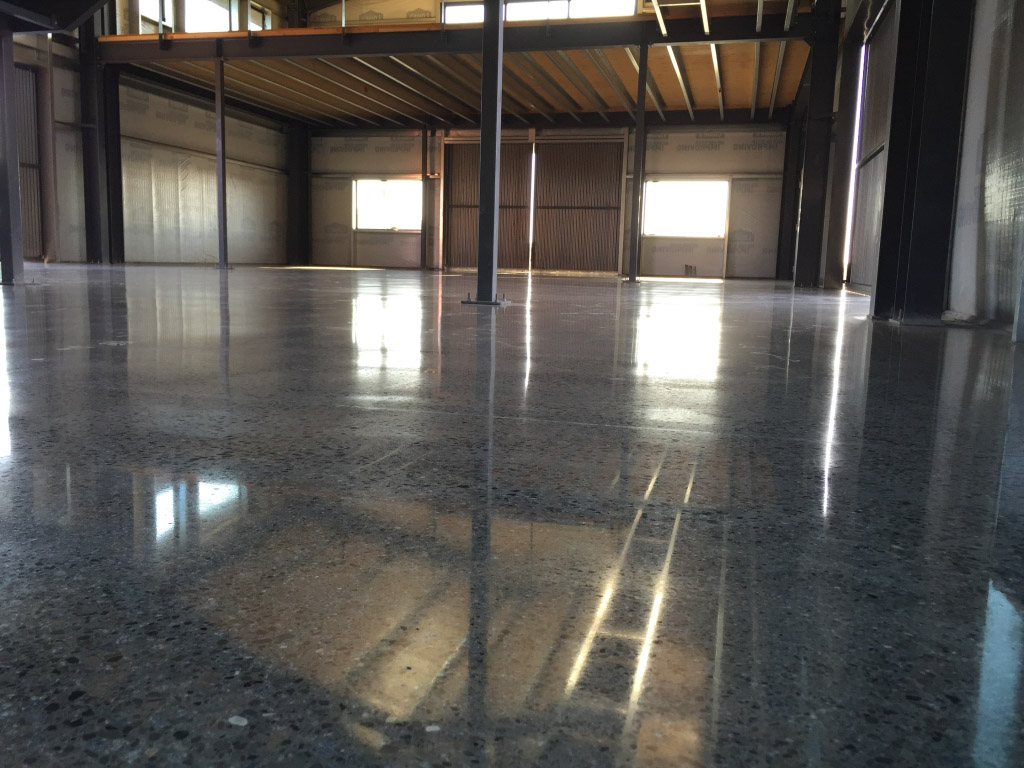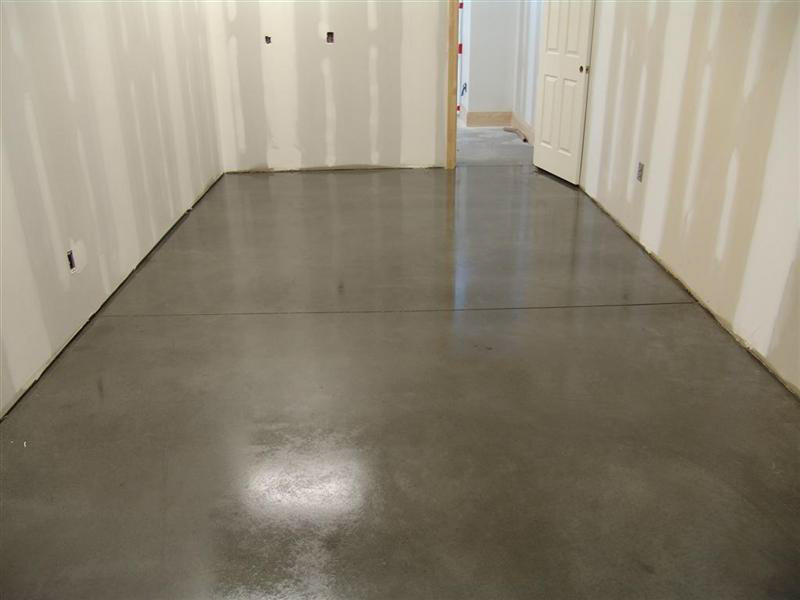People often mistake polished concrete and sealed concrete, and we don’t hold that against them. Hey, if 1,110 people can walk by a virtuoso playing one of the most intricate Bach pieces ever composed on a $3.5 million dollar violin without noticing, how can we expect people to notice the difference between two pieces of shiny concrete? Read on to learn more about each below:
Sealed Concrete (typical acrylic sealer): Installation – The concrete is cleaned and allowed to dry. A thin layer of acrylic is spread on the concrete, applied in a similar fashion as paint. Once dry, the surface is shiny because there is a thin layer of acrylic plastic that has filled the voids of the concrete.
Some sealers are specially formulated to prevent moisture intrusion under finished floors, and often times sealed concrete is used for cheap, low traffic areas (such as stairwells, IT rooms, file storage, etc.). The problem with sealers other than being generally ugly is that they wear out quickly and are susceptible to damage by moisture coming up through the slab and heavy traffic/impact on the top of the slab. Each time something passes over the surface it will erode until the sealer is gone and you are back to bare concrete (especially in high impact areas like right at a door or high traffic pathway or route). These surfaces are prone to needing re-waxing and resealing regularly and never have the same clarity or “pop” as a piece of correctly polished concrete (even on day 1).
Sealers can help prevent freeze thaw issues in cold areas and are used often for exterior purposes or on the CMU walls of your uncles basement of his house in the river bottom, but as an interior surface for high traffic they just don’t cut it. They also aren’t as good for the environment as they have higher VOC’s and require much more physical material and maintenance than polished concrete
 Polished Concrete: Installation – Polished Concrete floors are built by grinding the surface of the concrete with ever finer grits of diamond blades, until the surface is completely smooth and scratch free. During these grinding passes, control joints, cracks, spalls, and other imperfections can be filled and repaired to make a seamless floor. During the grinding, various aggregate and concrete features that have been buried since placement become visible creating a beautiful, one of a kind floor. Depending on grit level; a glassy, mirror like finish can be achieved. The best part is ready mix companies nearly always use local aggregate so you are exposing regional color, character, and roots!
Polished Concrete: Installation – Polished Concrete floors are built by grinding the surface of the concrete with ever finer grits of diamond blades, until the surface is completely smooth and scratch free. During these grinding passes, control joints, cracks, spalls, and other imperfections can be filled and repaired to make a seamless floor. During the grinding, various aggregate and concrete features that have been buried since placement become visible creating a beautiful, one of a kind floor. Depending on grit level; a glassy, mirror like finish can be achieved. The best part is ready mix companies nearly always use local aggregate so you are exposing regional color, character, and roots!
During the grinding, a penetrating lithium silicate densifier is applied to react with the concrete producing insoluble calcium silicate hydrate within the concrete pores. The increased surface hardness imparted by the densifier reduces dusting, staining, and maintenance producing a cleaner, healthier environment. This happens within the concrete, not on the surface meaning traffic will not greatly affect the finished product.
Polished Concrete is therefore a great choice for high traffic, high visibility areas that should be functional, beautiful, and long lasting. Some great examples are open office areas, lobbies, elevator landings, cafeterias, conference rooms, hallways, bathrooms, chemical storage areas, bike storage areas, game rooms, and whatever else you can dream up!
In conclusion; the installation, finished product, maintenance, and lifespan of sealed and polished concrete are TOTALLY DIFFERENT. They each have their place in the universe, and we’ll surely touch on this topic again in subsequent posts. In the meanwhile, the next time you are walking on a gorgeous piece of polished concrete, take notice! Or let us know if you would like to tour one of our projects so you can see what we mean. And remember the link in the beginning of this post; when something beautiful is in front of you, stop to enjoy it!



Leave A Comment